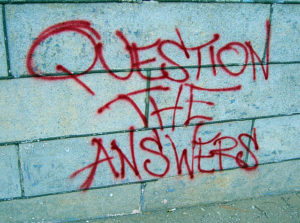
BY: Benjamin Gibbons, MA, Oxford University
The flicker of a grimace is the only sign my student will give that we’ve touched a nerve. It’s an expression that isn’t exactly uncommon as we work our way through the syllabus, and it makes me think that A-Level Anthropology isn’t really like the A-Levels I can remember doing myself. The topic that elicits this particular reaction is ‘Transhumanism’; like so many other areas in anthropology, its putting pressure on some of the fundamental categories that my student, like the rest of us, uses to make sense of the world. The question today is this: when even our own bodies are shaped by the cultural networks that we have produced, is there anything left that can separate the natural from the cultural? What do those words even mean? They’re tough questions.

In a subject like anthropology, the fact that they’re tough is a sign that they’re the right questions to be asking. Yet the visible discomfort on the face of my student makes me wonder if I’m doing enough to support my student in the personal upheaval that good anthropological thinking often instigates, and at a more general level, whether enough attention is given to the emotional difficulty of becoming the kind of person that anthropology asks us to become. Whilst the discipline of anthropology is a fundamentally intellectual project, the practice of teaching always involves a pastoral dimension. And taking this part of the role seriously means reformulating some of the most difficult challenges of anthropological thought into a personal language that takes the wellbeing and lived experience of the student as its central term.
From this perspective, some of the biggest questions in the subject are cast in a different shade. Their intellectual complexity is no longer the only measure that I have to concern myself with; rather, what Renato Rosaldo called their ‘force’, their meaningfulness, becomes an aspect that I have to consider alongside. Taking seriously the force of the concepts I’m teaching makes me wonder how what I’m teaching intersects with my student’s own ability to find meaning in their life. And this question, too, is a tough one to be asking.
There’s an old anthropological magic trick that I learnt as an undergraduate, and it goes as follows: a knowing teacher takes both edges of a contingent table-cloth and pulls it off in one smooth motion to reveal that the objects are, in fact, merely floating in mid-air. It is an impressive trick. But the cutlery is not laid out exactly as it was before. A few things have dropped down here and there, too heavy to be kept afloat by gusts of air; some other pieces of crockery look more fragile, suspended above the ground. I would do well to remember that, after the lesson is done, my student still has to sit down to eat. We don’t just have to think these problems; we have to live them too.
 This journal provides a much-needed space for conversation around the difficulties of teaching anthropology, and many anthropologists have written about the challenges involved in helping students to question the ‘naturalness’ of their own behaviours. This forgetting of the self is, in some ways, the condition for empathy. But anthropology should make the world seem richer than it seemed at first, not poorer, vicariously balanced on some thinned-out fictions. We should be aware of the dangers of giving pedagogical priority to ‘defamiliarizing the familiar’. This is a necessary part of anthropological thinking, but the aim is surely to understand the structures through which people make their experiences meaningful.
This journal provides a much-needed space for conversation around the difficulties of teaching anthropology, and many anthropologists have written about the challenges involved in helping students to question the ‘naturalness’ of their own behaviours. This forgetting of the self is, in some ways, the condition for empathy. But anthropology should make the world seem richer than it seemed at first, not poorer, vicariously balanced on some thinned-out fictions. We should be aware of the dangers of giving pedagogical priority to ‘defamiliarizing the familiar’. This is a necessary part of anthropological thinking, but the aim is surely to understand the structures through which people make their experiences meaningful.
Respect, after all, is found not in the fact of difference, but in the depth of it, in the legitimation of the possibilities disclosed within it. Showing this legitimacy is something that I don’t find my anthropological language predisposed to, and a shift in teaching is necessary. A focus on not just cultural contingency, or subordination, but on the importance of those practices to identity – an identity that is more than the unwitting dupe of the cultural structures around it. This means more emphasis on why distinctions like ‘human’ and ‘machine’ might be significant and worthwhile. I am less practiced at these discussions, more uncomfortable in the role of an apologist than in the role of a critic. Yet learning the importance of both personas, and passing that knowledge on, is essential to anthropology’s great promise: to make the strange seem as meaningful as we ever found home to be.
Benjamin Gibbons, MA, Oxford University
benjamin.gibbons@st-hughs.ox.ac.uk

Leave a Reply
You must be logged in to post a comment.